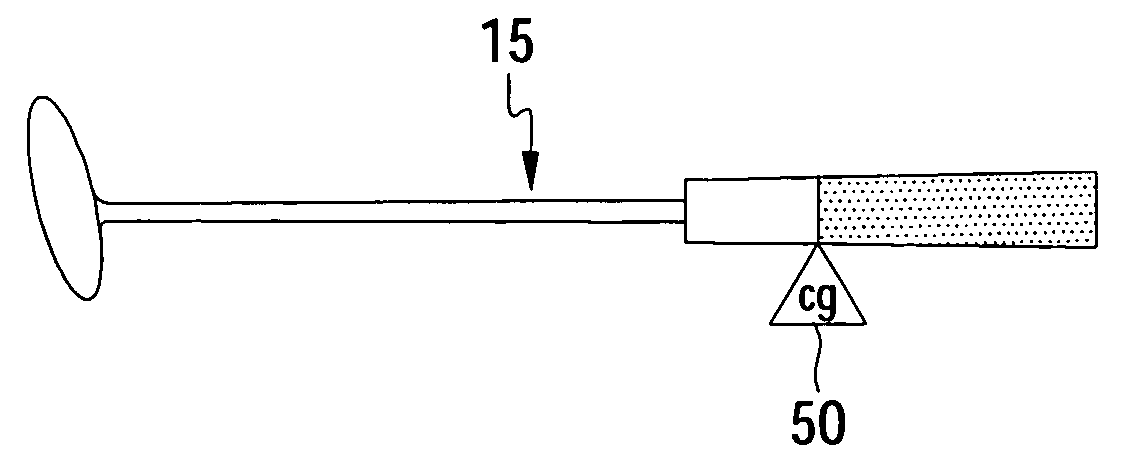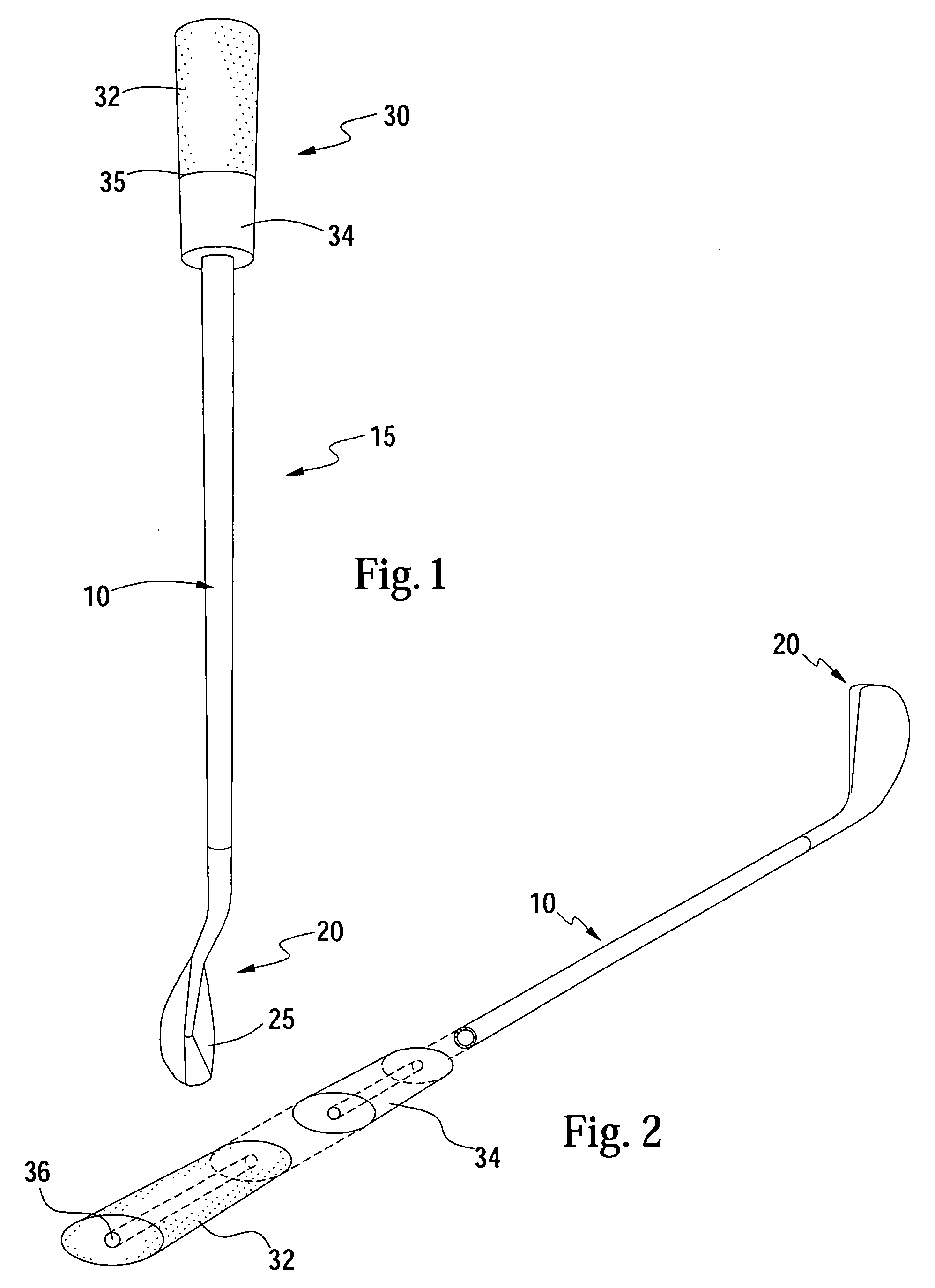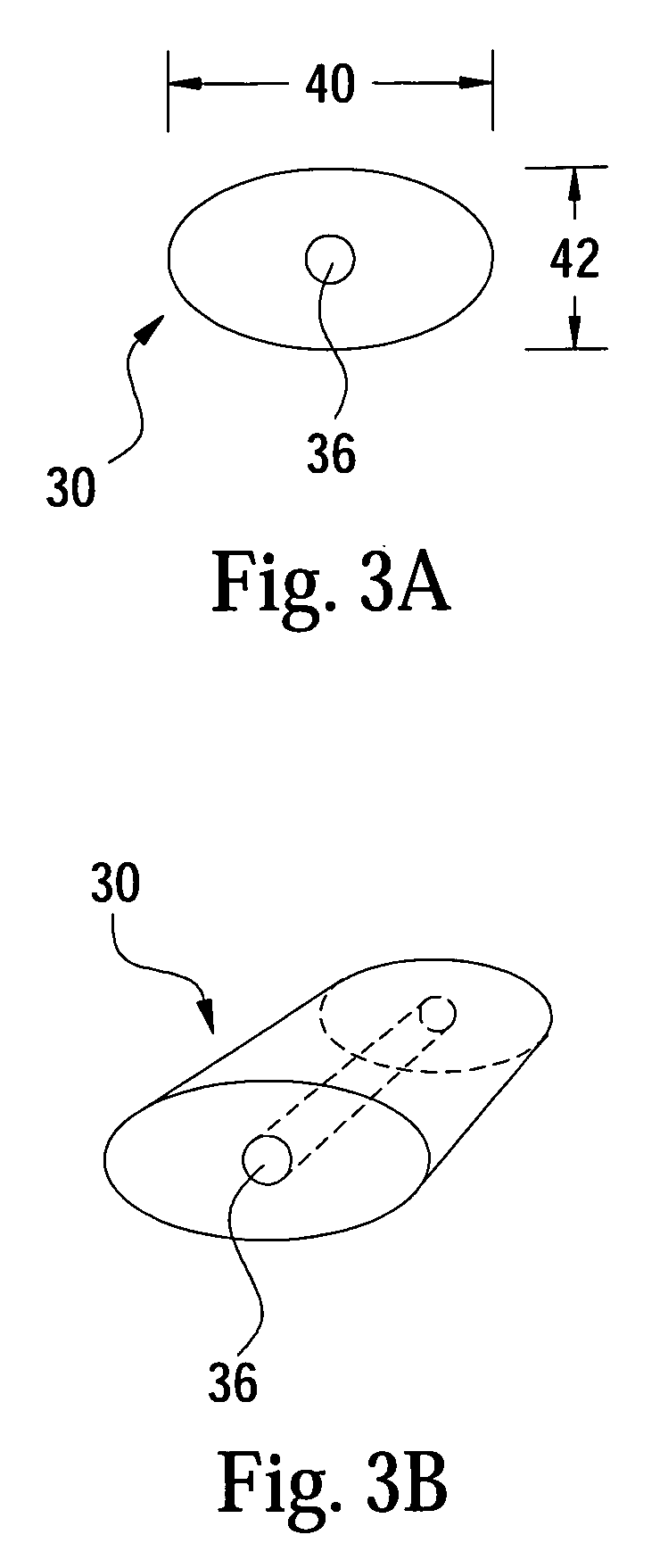Counterweighted golf club
a golf club and weight technology, applied in golf clubs, racket sports, gymnastics, etc., can solve the problems of inability to achieve the effect of reducing the impact force, so as to improve the impact force and improve the golfer's accuracy. , the effect of increasing the moment of inertia
- Summary
- Abstract
- Description
- Claims
- Application Information
AI Technical Summary
Benefits of technology
Problems solved by technology
Method used
Image
Examples
Embodiment Construction
[0038]As shown in FIG. 1, a golf club 15 comprises shaft 10, head 20, and grip (or handle) 30. The head 20 is attached to the lower end of the shaft 10, which will be referred to as the head-end of the shaft. Similarly, the grip 30 is attached to the upper end of the shaft 10, which will be referred to as the handle-end of the shaft.
[0039]The shaft 10 may be a standard golf club shaft, and it may be made of steel, graphite, or other material(s). The shaft is of a standard length and weight. The head 20 may be any type of golf club head or blade that the golfer desires. Regardless of the particular structure or design of the club head, almost all club heads include an elongated, substantially flat surface 25, referred to as the face, with which the golf ball is to be struck. Many, many head designs are currently being manufactured and are well known to those skilled in the art. Any method of attachment of the shaft 10 to the head 20 is acceptable. Such methods include adhesive means,...
PUM
 Login to View More
Login to View More Abstract
Description
Claims
Application Information
 Login to View More
Login to View More - R&D
- Intellectual Property
- Life Sciences
- Materials
- Tech Scout
- Unparalleled Data Quality
- Higher Quality Content
- 60% Fewer Hallucinations
Browse by: Latest US Patents, China's latest patents, Technical Efficacy Thesaurus, Application Domain, Technology Topic, Popular Technical Reports.
© 2025 PatSnap. All rights reserved.Legal|Privacy policy|Modern Slavery Act Transparency Statement|Sitemap|About US| Contact US: help@patsnap.com



